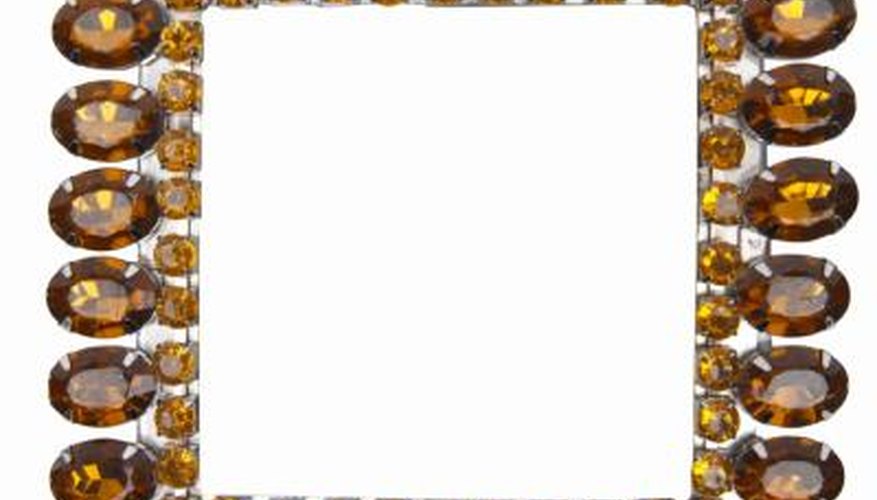Adobe Illustrator offers a variety of border options. Various patterns offer unique styles, and fills and strokes can be applied to make them more interesting.
Go to "File" > "Place" to place your image on the artboard. Select the "Rectangle" tool and draw it around the image on the artboard. Shapes can be given a colour fill or colour stroke. Choose a decorative border from the "Brushes" panel. If it's not open, go to "Window" > "Brushes" to open the panel. All panels can be opened or closed from the "Window" menu.
- Adobe Illustrator offers a variety of border options.
- Go to "File" > "Place" to place your image on the artboard.
Click on the down arrow to the far right of the "Brushes" panel to display the submenu. Scroll to the bottom and move the mouse over the submenu "Open Brush Library" > "Decorative." Click on the decorative brushes of your choice, such as "Elegant Curl_Floral Brush Set," to open the panel featuring a selection of decorative brushes for borders.
Experiment with decorative brushes until you find one you like. Specify the weight of the decorative brush from the "Options" bar.
Change the colour of the decorative brushes using a solid colour on the stroke, not the fill. Remember, the border is the stroke of a rectangle created around the image. Choosing to fill the rectangle with colour will cover the image.
- Click on the down arrow to the far right of the "Brushes" panel to display the submenu.
- Change the colour of the decorative brushes using a solid colour on the stroke, not the fill.
Select the border and go to "Object" > "Expand Appearance." You'll notice additional paths and anchor points appear along the border. Your border is now an expanded object that a fill and stroke can be applied to.
- Select the border and go to "Object" > "Expand Appearance."
- Your border is now an expanded object that a fill and stroke can be applied to.
Select "Fill" from the "Tools" panel and fill the border with a solid colour without a stroke. Click on the square with the red line through it to turn off a fill or stroke. This means no stroke or fill when selected. You'll notice the border appears the same as it did with a stroke before the border was expanded.
Go to "Window" > "Gradient" with "Fill" still selected. A gradient can only be applied to a brush that has been expanded because it's an object with paths and anchor points. Change gradient colours by double clicking on the sliders. You now have a gradient colour on the border.
Select the stroke from the "Tools" panel and remove the fill. The stroke on an expanded border now appears as an outline with no colour inside the decorative brush.
